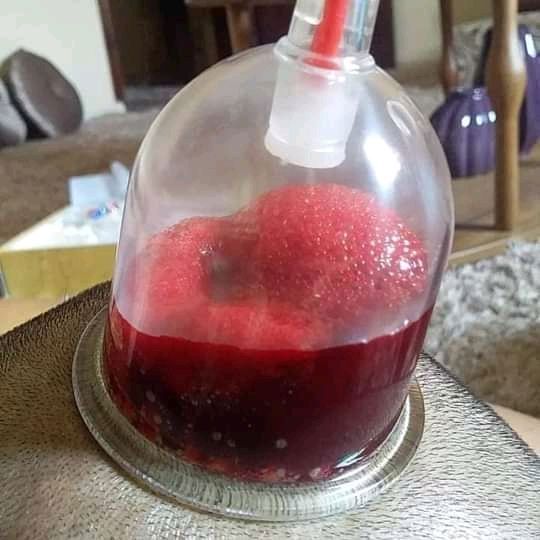Hijama A Natural Approach to Pain Management
Hijama, also known as cupping therapy, has gained recognition as a holistic treatment option for various health issues, particularly pain management. This ancient practice, rooted in traditional medicine, involves creating suction on specific areas of the skin using glass or plastic cups. The therapeutic benefits of hijama extend beyond pain relief, making it a popular choice among those seeking natural and alternative methods for improving their overall health and well-being.
What is Hijama?
Hijama in Dubai is an ancient therapeutic technique that has been practiced for thousands of years in various cultures, including Chinese, Middle Eastern, and Eastern European traditions. The word "hijama" is derived from the Arabic term for "sucking." During a hijama session, cups are placed on the skin, and a vacuum is created either by heat or suction. This process draws the skin and underlying tissues into the cup, which may lead to increased blood circulation, reduced inflammation, and enhanced tissue healing. Many people are turning to hijama as a natural approach to pain management, as it offers a non-invasive alternative to conventional treatments.

The Benefits of Hijama for Pain Management
One of the most significant advantages of hijama is its effectiveness in alleviating various types of pain. The therapy is particularly beneficial for conditions such as:
1. Musculoskeletal Pain
Hijama has shown promise in treating musculoskeletal pain, including back pain, neck pain, and joint pain. By promoting blood flow and reducing muscle tension, hijama can help alleviate discomfort and improve mobility. Many individuals report significant pain relief after just a few sessions.
2. Migraines and Headaches
For those who suffer from chronic migraines or tension headaches, hijama may offer a natural solution. The suction created during the therapy can help release tension in the neck and shoulder muscles, which are often contributing factors to headaches. Some studies have indicated that hijama can reduce the frequency and intensity of migraines, providing long-lasting relief for sufferers.
3. Sports Injuries
Athletes frequently turn to hijama as a way to manage pain and accelerate recovery from sports injuries. The therapy can help reduce inflammation, improve circulation, and promote faster healing of damaged tissues. By addressing pain and enhancing recovery, hijama allows athletes to return to their training and competition more quickly.
The Science Behind Hijama
While hijama has been used for centuries, modern research is beginning to explore the science behind its effectiveness. Studies suggest that hijama may help stimulate the body's natural healing processes by increasing blood circulation and promoting the release of endorphins, the body's natural painkillers. Additionally, the suction created by the cups may help to release toxins from the body and reduce muscle stiffness, contributing to overall pain relief.
A Holistic Approach to Health
Hijama is not only about pain management; it is also considered a holistic approach to health and well-being. The therapy is often used in conjunction with other natural treatments, such as herbal remedies, acupuncture, and dietary changes. This comprehensive approach can enhance the overall effectiveness of pain management strategies and support the body's ability to heal itself.
Emotional and Mental Well-Being
In addition to its physical benefits, hijama may also support emotional and mental well-being. The therapy is believed to help reduce stress, anxiety, and depression by promoting relaxation and improving mood. Many practitioners incorporate mindfulness and breathing techniques into hijama sessions, allowing individuals to experience a deeper sense of calm and relaxation.
What to Expect During a Hijama Session
If you are considering hijama for pain management, it is essential to understand what to expect during a session. Typically, a hijama session lasts between 30 to 60 minutes and involves the following steps:
Consultation: Before the session, a qualified practitioner will discuss your health history and specific concerns to create a personalized treatment plan.
Preparation: The areas to be treated will be cleaned, and the cups will be positioned on the skin. Depending on the technique used, the practitioner may use heat or a mechanical pump to create suction.
Therapy: The cups will remain in place for about 5 to 15 minutes. You may feel a slight pulling sensation, but it should not be painful. Some practitioners may also perform a technique called "dry cupping," where the cups are moved along the skin to enhance circulation further.
Aftercare: After the session, it is essential to drink plenty of water and allow your body to rest. You may notice some redness or bruising where the cups were applied, which is normal and should subside within a few days.
Choosing a Qualified Practitioner
To ensure the best results and a safe experience, it is crucial to choose a qualified practitioner for your hijama treatment. Look for someone with appropriate training and certification in hijama or cupping therapy. They should have a solid understanding of the technique and be able to tailor the treatment to your specific needs.
Conclusion
Hijama offers a natural and holistic approach to pain management, providing relief for various conditions while promoting overall health and well-being. As more individuals seek alternative therapies for pain relief, hijama continues to gain popularity for its effectiveness and minimal side effects. By considering hijama as part of your pain management strategy, you may discover a new path to healing and improved quality of life. Always consult with a healthcare professional before starting any new treatment to ensure it aligns with your individual health needs.